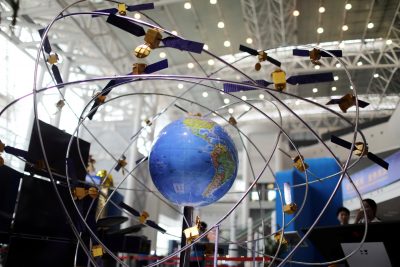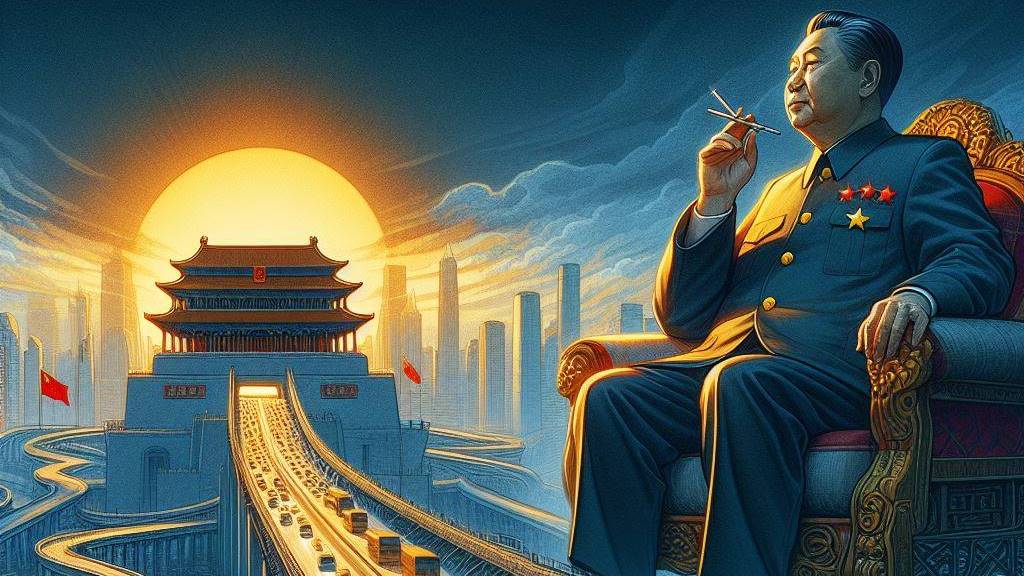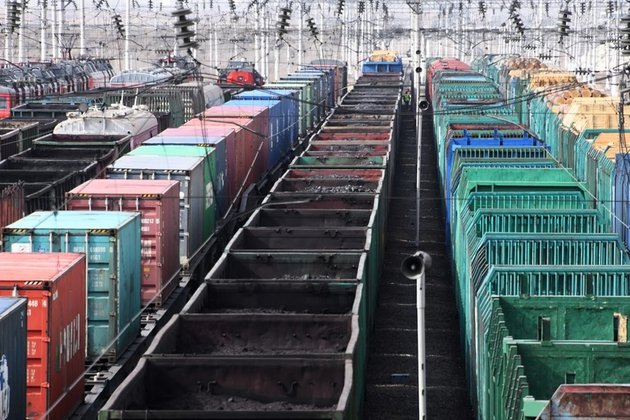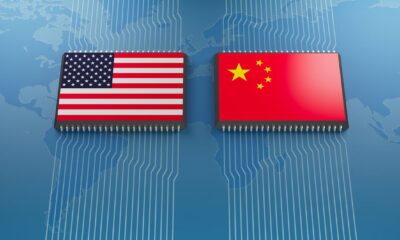Trade
Gulf states go digital with China

Author: Mordechai Chaziza, Ashkelon Academic College
The US–China strategic rivalry extends to the struggle for control over the digital economy — particularly digital infrastructure and technological innovation. China’s digital economy is among the most vibrant in the world, ranking second globally in 2021 at US$7.1 trillion. It has become a crucial part of the relations between China and Gulf states including Bahrain, Kuwait, Iraq, Oman, Qatar, Saudi Arabia and the United Arab Emirates (UAE).
The energy sector is still the largest recipient of Chinese investment in most Gulf countries. China’s crude oil imports originate from just nine Middle Eastern nations. Beijing’s oil and gas imports, infrastructure investment and arms sales give it regional influence that runs counter to the United States. The Gulf state economies have historically depended on energy exports for economic prosperity.
But the rise of digital technologies over the past decade has seen Gulf states diversify their economies by developing financial sectors and knowledge-based industries. That means digital cooperation between China and Gulf states could be a game changer for Beijing in its competition with the United States to achieve strategic superiority in the region.
The joint development of telecommunications, smart cities, artificial intelligence and technology-oriented businesses is a complementary endeavour for China and Gulf states. The young population of the Gulf are exposed to the growing presence of Chinese technology, ranging from social networking applications to digital payment platforms.
The Digital Silk Road (DSR) is the technological arm of the Belt and Road Initiative. The DSR Initiative has the potential to add US$255 billion to regional GDP and create 600,000 technology-related jobs in Gulf Cooperation Council countries by 2030. Still, DSR-related projects remain unevenly distributed among the Gulf states.
Tech giants have a role in delivering China’s DSR initiative and continuing the digital development of the region. Huawei is working with Saudi Arabia to develop digital infrastructure for religious pilgrimages. The firm has also partnered with Dubai officials to help update its airport and cooperated with the Dubai Electricity and Water Authority to build fibre optics and video surveillance.
In 2022, the UAE telecommunications company, Du, signed a Memorandum of Understanding (MoU) with Huawei to research, verify and replicate multi-access edge computing applications in the region. That includes leveraging 5G multi-access edge computing applications to live broadcast the Presidential Cycling Cup.
Huawei received permission to offer cloud computing services in Kuwait in July 2022. Alibaba has since pledged to build a ‘Tech Town’ with Meraas Holding, a Dubai-based developer, housing over 3000 high-tech companies. Alibaba has also inked deals to store cloud data in Oman and has a vast e-commerce footprint in Saudi Arabia.
Chinese artificial intelligence company SenseTime opened a regional headquarters in Abu Dhabi in 2019. Abu Dhabi Global Market and the Hong Kong Securities and Exchange have recently worked together to foster financial services innovation in Hong Kong and the United Arab Emirates.
Saudi firm M/s Aramco Asia is in negotiations to sign an MoU with Chinese firm Avic International on drone services and technology development. Chinese telecom firm Huawei is also trying to bid for the expansion of data processing centres in Dammam and Riyadh.
Chinese tech giants have notably participated in developing 5G networks in Gulf states. The United Arab Emirates and Kuwait were the first Gulf states to construct 5G networks. By 2019, the UAE 5G network covered 80 per cent of its cities, and Huawei had deployed more than 1000 5G sites across Kuwait.
China’s growing regional presence has led Washington to pressure Gulf states into picking sides. The United States perceives certain aspects of their digital cooperation with China as damaging to its national security. The Gulf states are aware of US concerns about China’s regional presence and they want to avoid getting caught in a great power conflict.
Despite doubts about Washington’s commitment to their security, Gulf states recognise that there is no substitute for the US military presence to block Iranian aggression. Gulf states are trying to diversify their economic and military support to avoid absolute dependence on Washington or Beijing. Picking sides risks the Gulf states losing their security partnership with the United States or…
Trade
Self-Reliance and Openness: Core Principles of China’s Third Plenary Session

The Third Plenum communique from the CCP indicates a prioritization of stability and compromise in response to China’s economic challenges. It highlights the concept of Chinese-style modernization and establishes political guidelines for balancing regulation and market forces.
The CCP’s Third Plenum communique signals a focus on stability and compromise in the face of China’s economic challenges. It emphasises Chinese-style modernisation and sets political directions for balancing regulation and market forces. While not as groundbreaking as previous plenums, it acknowledges the importance of market mechanisms and technological self-reliance, aiming to address issues like high youth unemployment and private sector uncertainty. The communique seeks to navigate the complexities of global competition and domestic innovation, potentially reshaping global supply chains and trade dynamics. Overall, it presents a pragmatic blueprint for China’s economic future.
Source : Self-reliance and openness central pillars of China’s Third Plenum | East Asia Forum
Trade
Trade Prevails Over Political Persuasions in China-Germany Relations

China and Germany maintain a strong bilateral relationship, rooted in economic cooperation despite ideological differences. Recent visits and agreements focus on expanding trade and addressing mutual concerns, navigating challenges while nurturing ties.
Evolving Bilateral Ties
China and Germany share a strong bilateral relationship, rooted in history since 1972. This connection has seen moments of cooperation intertwined with periods of tension. German Chancellor Olaf Scholz’s April 2024 visit underscores Germany’s commitment to fostering this partnership, reflecting a mutual interest in maintaining economic ties despite ideological differences.
Economic Pragmatism
As the second and third largest global economies, China and Germany’s economic interdependence is crucial. Germany emerged as China’s primary trading partner in 2023, with trade values reaching €254.4 billion (US$280 billion). In response to global scrutiny, Germany has taken a balanced approach, emphasizing economic stability over political discord. This was evident during Scholz’s prior visit in November 2022, where his diplomatic tone contrasted with broader EU sentiments.
Facing Challenges Together
Despite increasing public skepticism in Germany regarding China’s global influence and human rights issues, both nations continue to seek common ground. Their October 2023 Joint Statement highlights intentions to pursue cooperation in areas like carbon neutrality and open markets. To navigate these complex terrains, Germany can utilize its institutional frameworks to enhance dialogue, while also considering supply chain diversification to reduce dependency on China. The intertwining nature of their economies suggests that, despite challenges, both countries will continue to prioritize their substantial trade relations.
Source : Trade trumps political persuasions in China–Germany relations
Trade
Fixing fragmentation in the settlement of international trade disputes

Fragmentation in global trade due to the lack of development in multilateral trade rules at the WTO has led to an increase in FTAs. The Appellate Body impasse has further exacerbated fragmentation, requiring a multilateral approach for reform.
Fragmentation in Global Trade
Fragmentation in global trade is not new. With the slow development of multilateral trade rules at the World Trade Organization (WTO), governments have turned to free trade agreements (FTAs). As of 2023, almost 600 bilateral and regional trade agreements have been notified to the WTO, leading to growing fragmentation in trade rules, business activities, and international relations. But until recently, trade dispute settlements have predominantly remained within the WTO.
Challenges with WTO Dispute Settlement
The demise of the Appellate Body increased fragmentation in both the interpretation and enforcement of trade law. A small number of WTO Members created the Multi-Party Interim Appeal Arbitration Arrangement (MPIA) as a temporary solution, but in its current form, it cannot properly address fragmentation. Since its creation in 2020, the MPIA has only attracted 26 parties, and its rulings have not been consistent with previous decisions made by the Appellate Body, rendering WTO case law increasingly fragmented.
The Path Forward for Global Trade
Maintaining the integrity and predictability of the global trading system while reducing fragmentation requires restoring the WTO’s authority. At the 12th WTO Ministerial Conference in 2022, governments agreed to re-establish a functional dispute settlement system by 2024. Reaching a consensus will be difficult, and negotiations will take time. A critical mass-based, open plurilateral approach provides a viable alternative way to reform the appellate mechanism, as WTO Members are committed to reforming the dispute settlement system.
Source : Fixing fragmentation in the settlement of international trade disputes






